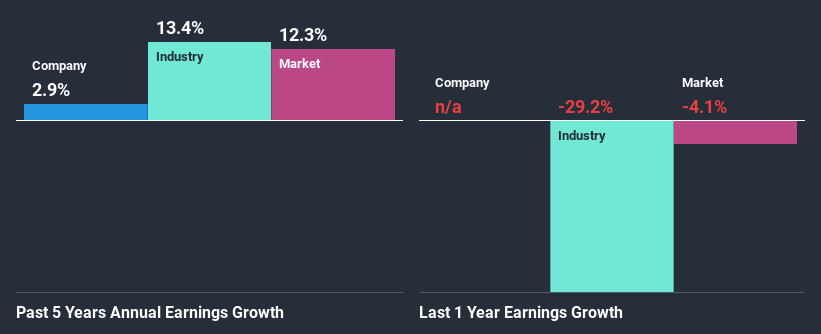Can Mixed Fundamentals Have A Negative Impact on DataDot Technology Limited (ASX:DDT) Current Share Price Momentum?

DataDot Technology's (ASX:DDT) stock is up by a considerable 75% over the past three months. But the company's key financial indicators appear to be differing across the board and that makes us question whether or not the company's current share price momentum can be maintained. Specifically, we decided to study DataDot Technology's ROE in this article.
Return on Equity or ROE is a test of how effectively a company is growing its value and managing investors’ money. In other words, it is a profitability ratio which measures the rate of return on the capital provided by the company's shareholders.
See our latest analysis for DataDot Technology
How Do You Calculate Return On Equity?
Return on equity can be calculated by using the formula:
Return on Equity = Net Profit (from continuing operations) ÷ Shareholders' Equity
So, based on the above formula, the ROE for DataDot Technology is:
1.5% = AU$29k ÷ AU$1.9m (Based on the trailing twelve months to June 2020).
The 'return' is the yearly profit. So, this means that for every A$1 of its shareholder's investments, the company generates a profit of A$0.02.
What Has ROE Got To Do With Earnings Growth?
Thus far, we have learned that ROE measures how efficiently a company is generating its profits. We now need to evaluate how much profit the company reinvests or "retains" for future growth which then gives us an idea about the growth potential of the company. Generally speaking, other things being equal, firms with a high return on equity and profit retention, have a higher growth rate than firms that don’t share these attributes.
A Side By Side comparison of DataDot Technology's Earnings Growth And 1.5% ROE
It is quite clear that DataDot Technology's ROE is rather low. Not just that, even compared to the industry average of 16%, the company's ROE is entirely unremarkable. Therefore, the disappointing ROE therefore provides a background to DataDot Technology's very little net income growth of 2.9% over the past five years.
As a next step, we compared DataDot Technology's net income growth with the industry and were disappointed to see that the company's growth is lower than the industry average growth of 13% in the same period.
Earnings growth is a huge factor in stock valuation. It’s important for an investor to know whether the market has priced in the company's expected earnings growth (or decline). Doing so will help them establish if the stock's future looks promising or ominous. Is DataDot Technology fairly valued compared to other companies? These 3 valuation measures might help you decide.
Is DataDot Technology Using Its Retained Earnings Effectively?
DataDot Technology doesn't pay any dividend, meaning that potentially all of its profits are being reinvested in the business. This doesn't explain the low earnings growth number that we discussed above. So there could be some other explanation in that regard. For instance, the company's business may be deteriorating.
Conclusion
In total, we're a bit ambivalent about DataDot Technology's performance. While the company does have a high rate of reinvestment, the low ROE means that all that reinvestment is not reaping any benefit to its investors, and moreover, its having a negative impact on the earnings growth. Wrapping up, we would proceed with caution with this company and one way of doing that would be to look at the risk profile of the business. You can see the 5 risks we have identified for DataDot Technology by visiting our risks dashboard for free on our platform here.
This article by Simply Wall St is general in nature. It does not constitute a recommendation to buy or sell any stock, and does not take account of your objectives, or your financial situation. We aim to bring you long-term focused analysis driven by fundamental data. Note that our analysis may not factor in the latest price-sensitive company announcements or qualitative material. Simply Wall St has no position in any stocks mentioned.
Have feedback on this article? Concerned about the content? Get in touch with us directly. Alternatively, email editorial-team@simplywallst.com.

 Yahoo Finance
Yahoo Finance 
